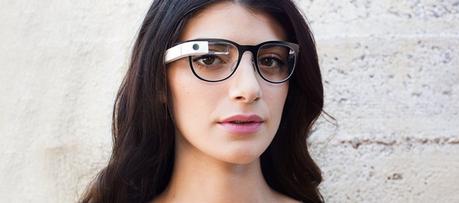What is the near and long-term future of this technology? Are there any limitations to augmented reality which will affect its development in the years to come? Here’s everything you should know about the future of AR.
What is Augmented Reality?
Augmented reality isn’t a novelty – in fact the idea itself has been with us since the early 1990s. During all this time it just hasn’t earned a name for itself – until the arrival of mobile devices, smart wearables and the Internet of Things technologies.
Augmented reality is basically the introduction of superimposed graphics, audio and other sense enhancements over a real-world environment, always displayed in real-time. AR is a technology closely aligned with virtual reality (VR) and in essence aims to duplicate the environment in a computer device to create a visual system that effectively blurs the difference between the actual reality and its virtual augmentation.
Today augmented reality is no longer a domain for science fiction writers or curious researchers – it’s exploited in commercial environments by a wide range of small startups which develop technologies often thanks to investments from tech giants like Apple or Google. Some industry insiders expect the technology to revolutionize the way in which we perceive and interact with reality.
Augmented Reality is More Than Google Glass

Even if Google Glass is often interpreted as an important step towards augmented reality, AR is not only about wearables. AR apps are all the rage right now – and they come in handy to an incredible variety of industries. Google Translate AR app is just the tip of the iceberg.
AR technology emerges in sectors as disparate as medical/aesthetic (think ModiFace, the leading creator of facial recognition solutions), music (a projected Shazam visual feature and entertainment (for instance, the Star Wars app.
Retail and interior design already merge in apps like Cimagine, Curioos or the award-winning Tylko.
The Future of Augmented Reality
One possible direction of AR’s development is captured in a short movie Sight. Even if the idea of receiving instant contextual information about a person we’ve just met seems attractive, users will have to wait for a while to gain access to such solutions.
How about practical applications of AR? One area which will be revolutionized by technology is the retail sector, where AR will breach the gap between online and physical shops, offering personalized promotions delivered right to the wearer of a device, as well as a richer shopping experience – the latter particularly relevant to e-commerce and m-commerce.

Not many realize that augmented reality can potentially revolutionize customer service. Imagine that your car breaks down and all it takes is turn on an app which will perform a diagnostic test and guide you in a repair by showing you, for instance, where are jumper cables and where to connect them. We see the beginning of this in Volksvagen’s MARTA app or Audi’s AR app (both developed by Metaio) which superimpose information about the vehicle or display a manual.
Other possible future uses of augmented reality will emerge in sectors like medicine (direct training of students), fine art (mixed media and interactive artworks), industry (assistance in prototyping), military (precise geolocation) and education (visualizing learning material in interactive apps).
Limitations of Augmented Reality
Every technology has limitations and AR is no exception to this rule. There are at least several issues that should be addressed before the technology can become fully commercialized and go mainstream. Here are 4 serious issues AR is struggling with right now.
Data Rendition
This problem relates to the ways in which data is rendered on devices – for best effect, it should be rendered across the wearer’s full scope of vision, not partially. But that’s just part of the problem. For AR to fully serve its purpose, it should be equipped with a better understanding of natural body movements. Moreover, AR apps require Internet connectivity for optimized data rendition and that’s still a problem – there are many places where no connection is available.
Mobile Battery Life and Processing power
Whether we’re talking about mobile devices, smart wearables or the Internet of Things (which are all relevant to the development of AR), another important limitation is their battery life. Naturally, it should be extended to allow users make the most from the technology in daily use. Another serious problem lies in hardware since mobile devices aren’t powerful enough to process lots of real-time data. Before they become mainstream, some of those devices (think Google Glass) will need to become less pricy.
Privacy Issues
This is a serious concern about the AR technology which might impede its full growth right now, even if it mostly relates to its future applications. Image or face-recognition software paired with AR will allow users to access information about strangers imported from their online profiles. Sure, most of this data is put there willingly by users, but having a stranger learn all this about us upon the first meeting might be a bit disturbing. Devices using AR apps providing contextual information will need to deal with the widespread social privacy requirements first.
Information Overload
Finally, there’s the argument of information overload which we see often applied to technology in general. There are many people who are convinced that living in a constantly switched on society is going to change how we see reality (naturally, for the worse). A 24/7 technology on demand will surely impact our lives, but the criticism doesn’t really apply to AR – the danger of spending too much time in the virtual world and missing out on moments which are happening in reality doesn’t work for a technology which in fact merges the two, proving an enriched experience.
What will be the future of augmented reality? Right now everyone is curious whether AR will live up to its promise and deliver experiences that will revolutionize many different industries and aspects of consumer lives. According to the Pew Research Center, 83% of experts say that by 2025 wearable tech will have a “widespread and beneficial effect” on consumers and that those enriched with AR solutions will become commonplace in the next five years.
One way or another, we will surely find a way to benefit from the constant intelligent analytical mapping of the physical and social reality.
About the author -:
Isabel Wiliams is part of the team at – a UK business directory featuring free companies house filings. She is a great advocate of augmented reality. She combines her passion for everything tech- and digital-related with her love for writing.

